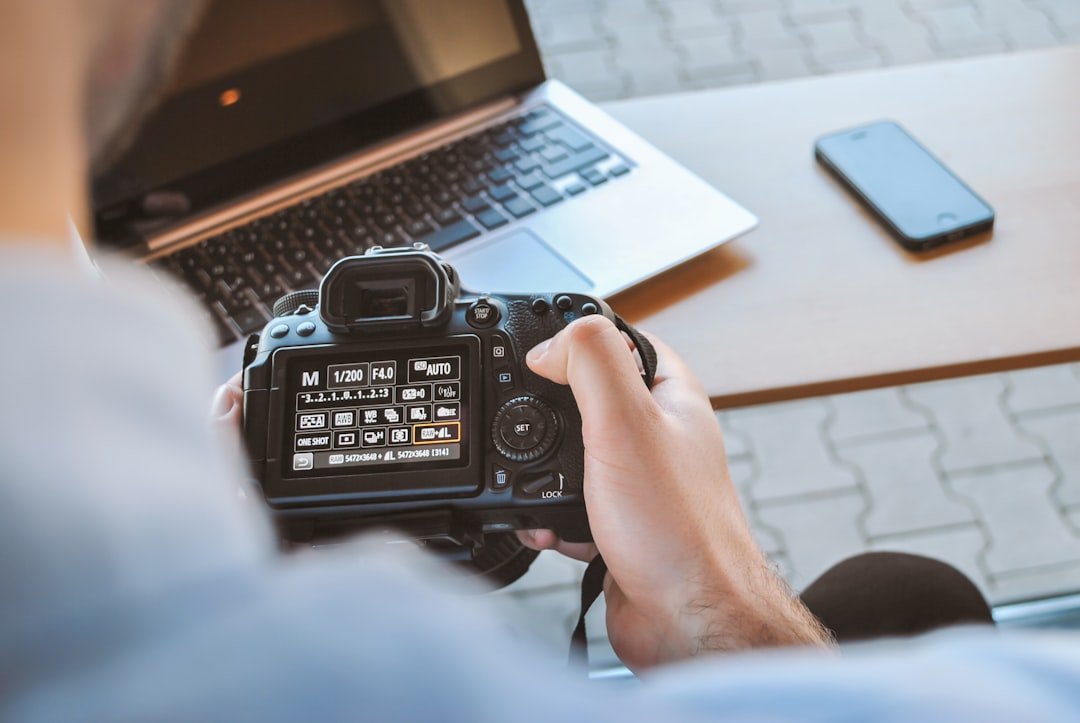Caller ID is a feature that has become an integral part of modern telecommunication, allowing users to identify incoming calls before answering. On the iPhone, this functionality is seamlessly integrated into the device’s operating system, providing users with a visual display of the caller’s name or number. This feature not only enhances user experience but also plays a crucial role in managing communication effectively.
With the rise of spam calls and telemarketing, the ability to see who is calling can help users make informed decisions about whether to answer or ignore a call. The iPhone’s Caller ID system operates through a combination of network services and device settings. When a call comes in, the network sends the caller’s information to the iPhone, which then displays it on the screen.
This process is generally reliable, but there are instances where users may wish to disable Caller ID for privacy reasons or to avoid unwanted attention. Understanding how Caller ID works and the implications of disabling it is essential for users who value their privacy or wish to maintain a level of anonymity in their communications.
Key Takeaways
- Caller ID on iPhone allows users to see the phone number or name of the person calling
- Disabling Caller ID can help protect privacy and prevent unwanted calls
- To disable Caller ID on iPhone, go to Settings, Phone, and then Show My Caller ID
- To make a private call on iPhone, dial *67 before the phone number
- Disabling Caller ID can prevent telemarketers and scammers from obtaining personal information
- Potential drawbacks of disabling Caller ID include not being able to make emergency calls with hidden Caller ID
- Troubleshooting common issues with disabling Caller ID may involve checking network settings and contacting the service provider
- Managing Caller ID on iPhone can help users control their privacy and avoid unwanted calls
The importance of disabling Caller ID
Disabling Caller ID can be an important consideration for individuals who prioritize their privacy. In an age where personal information is often shared and exploited, many users prefer to keep their phone numbers confidential, especially when contacting businesses or individuals they do not know well. By disabling Caller ID, users can prevent their number from being displayed, allowing them to communicate without revealing their identity.
This can be particularly useful in situations where one might be concerned about receiving unwanted callbacks or harassment. Moreover, there are scenarios where disabling Caller ID can enhance security. For instance, individuals involved in sensitive negotiations or discussions may choose to keep their number private to avoid potential repercussions.
Similarly, those who are involved in legal matters or witness protection programs may find it necessary to disable Caller ID to protect their identity. In these cases, the ability to make anonymous calls can provide a sense of safety and control over one’s personal information.
Step-by-step guide to disabling Caller ID on iPhone

Disabling Caller ID on an iPhone is a straightforward process that can be accomplished through the device’s settings. To begin, users should open the “Settings” app on their iPhone. Once inside the settings menu, scroll down and select “Phone.” This section contains various options related to phone functionality, including settings for calls, voicemail, and more.
Within the Phone settings, look for the option labeled “Show My Caller ID.” Tapping on this option will lead you to a toggle switch that allows you to enable or disable Caller ID. By switching this toggle to the off position, your number will no longer be displayed when making outgoing calls. It’s important to note that this setting may not be available on all carriers, as some service providers have specific policies regarding Caller ID functionality.
After making this change, users should exit the settings menu, and their preferences will be saved automatically.
How to make a private call on iPhone
| Step | Description |
|---|---|
| 1 | Open the Phone app on your iPhone |
| 2 | Tap on the Keypad tab at the bottom of the screen |
| 3 | Enter the number you want to call |
| 4 | Tap the “Hide My Caller ID” option to turn it on |
| 5 | Press the call button to make the private call |
In addition to disabling Caller ID through the settings menu, users can also make private calls on an ad-hoc basis by using a specific prefix before dialing a number. This method allows individuals to maintain their privacy without permanently altering their Caller ID settings. To make a private call, simply dial *67 before entering the recipient’s phone number.
For example, if you want to call the number 123-456-7890, you would dial *67-123-456-7890. This will mask your number for that particular call only. Using this method is particularly advantageous for those who may not want to disable Caller ID permanently but still wish to maintain anonymity for specific calls.
It provides flexibility and control over when your number is displayed and when it is hidden. However, it’s worth noting that some recipients may have settings that block calls from private numbers altogether, which could result in your call not going through.
Benefits of disabling Caller ID
The benefits of disabling Caller ID extend beyond mere privacy; they encompass a range of practical advantages that can enhance communication experiences. One significant benefit is the reduction of unwanted calls from telemarketers and spam callers. When your number is hidden, these callers are less likely to target you since they often rely on visible numbers for their outreach efforts.
This can lead to a more peaceful phone experience with fewer interruptions from unsolicited calls. Additionally, disabling Caller ID can foster more open communication in certain contexts. For example, individuals who are hesitant to reach out to someone new—be it for networking purposes or personal reasons—may feel more comfortable making a call if they know their number will not be displayed.
This anonymity can encourage people to take the first step in initiating conversations that they might otherwise avoid due to fear of judgment or rejection.
Potential drawbacks of disabling Caller ID

Missed Connections
Disabling Caller ID can have a significant downside: recipients of your calls may be less likely to answer if they see an incoming call from a private or blocked number. Many people are wary of answering calls from unknown sources due to the prevalence of scams and robocalls. As a result, your attempts at communication could be thwarted simply because your number is hidden.
The Importance of Transparency
Moreover, there may be situations where revealing your number is essential for establishing trust or credibility. For instance, if you are calling a business or professional contact for the first time, having your number displayed can lend legitimacy to your call and increase the likelihood of a positive response.
Complications in Professional Relationships
In such cases, disabling Caller ID could hinder effective communication and create barriers that might complicate professional relationships.
Troubleshooting common issues with disabling Caller ID
Users may encounter various issues when attempting to disable Caller ID on their iPhones or when making private calls. One common problem is that the “Show My Caller ID” option may be grayed out or unavailable in the settings menu. This situation often arises due to carrier restrictions; some mobile service providers do not allow users to disable Caller ID as part of their service agreements.
If you find yourself in this situation, contacting your carrier for clarification and assistance is advisable. Another issue that may arise involves confusion over whether the changes have taken effect. After disabling Caller ID, users might still receive calls from individuals who claim they can see the caller’s number.
In such cases, it’s important to remember that some services may still display caller information based on their own systems or settings. Testing your changes by making calls to different numbers can help confirm whether your Caller ID has been successfully disabled.
Conclusion and final tips for managing Caller ID on iPhone
Managing Caller ID on an iPhone involves understanding both its functionalities and limitations. While disabling Caller ID can provide privacy and reduce unwanted calls, it is essential to weigh these benefits against potential drawbacks such as decreased call response rates and challenges in establishing trust with new contacts. Users should also remain aware of their carrier’s policies regarding Caller ID settings, as these can vary significantly between providers.
For those who frequently find themselves needing privacy but also want the option of revealing their number when necessary, utilizing the *67 prefix for individual calls can be an effective compromise. Additionally, regularly reviewing and adjusting phone settings based on personal communication needs can help users maintain control over their privacy while ensuring effective connectivity with others. Ultimately, understanding how to navigate these features empowers iPhone users to manage their communication preferences effectively while safeguarding their personal information.
If you are looking to learn how to turn off caller ID on your iPhone, you may also be interested in reading an article on how to block unwanted calls on your iPhone. This article provides helpful tips and tricks for managing and blocking unwanted calls, which can be useful in conjunction with turning off caller ID. Additionally, you can explore more articles on iPhone features and settings on terms and conditions page.
FAQs
What is Caller ID on iPhone?
Caller ID on iPhone is a feature that allows you to see the phone number or contact name of incoming calls.
Why would someone want to turn off Caller ID on iPhone?
Some people may want to turn off Caller ID on iPhone to maintain their privacy and prevent their phone number from being displayed to the person they are calling.
How do you turn off Caller ID on iPhone?
To turn off Caller ID on iPhone, go to the Settings app, select Phone, then tap on Show My Caller ID. Toggle the switch to off to hide your caller ID on outgoing calls.
Can you turn off Caller ID for specific calls on iPhone?
No, the option to turn off Caller ID on iPhone applies to all outgoing calls and cannot be customized for specific calls.
Will turning off Caller ID on iPhone affect incoming calls?
No, turning off Caller ID on iPhone only affects outgoing calls. Incoming calls will still display the caller’s phone number or contact name if it is saved in your phone’s contacts.
